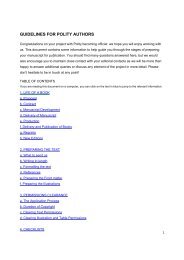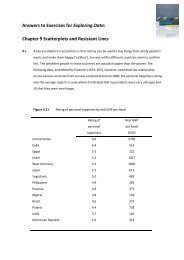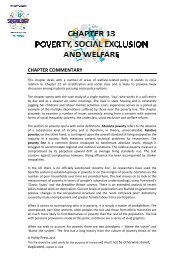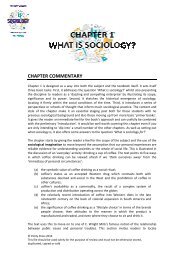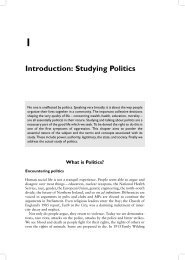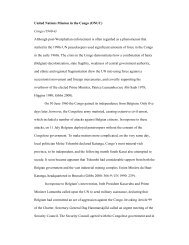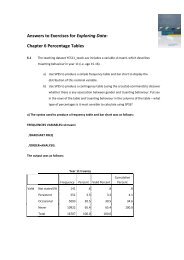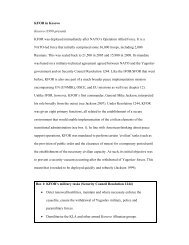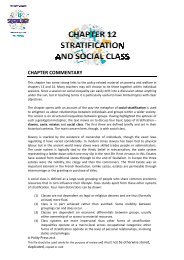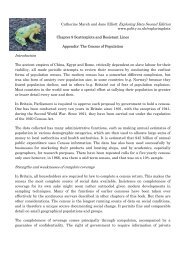Chapter 21 - Crime and Deviance - Polity
Chapter 21 - Crime and Deviance - Polity
Chapter 21 - Crime and Deviance - Polity
You also want an ePaper? Increase the reach of your titles
YUMPU automatically turns print PDFs into web optimized ePapers that Google loves.
<strong>Crime</strong> <strong>and</strong> <strong>Deviance</strong><br />
again in the context of anti-school sub-cultures in <strong>Chapter</strong> 20 <strong>and</strong> are clearly applicable<br />
to the social construction of disability from <strong>Chapter</strong> 11 <strong>and</strong> age-based categories from<br />
<strong>Chapter</strong> 9.<br />
Victims <strong>and</strong> perpetrators<br />
This topic aims to open up the relationship between the social construction of the<br />
deviant actors ‘perpetrator’ <strong>and</strong> ‘victim’ <strong>and</strong> broader social constructions of gender,<br />
sexualities <strong>and</strong> ethnic identities: <strong>Chapter</strong>s 15 <strong>and</strong> 16 are therefore particularly useful.<br />
Young people <strong>and</strong> prison<br />
This topic asks students to make links between arguments about youth crime <strong>and</strong> prison<br />
<strong>and</strong> draw upon both functionalism <strong>and</strong> labelling theory in their answers. It provides a<br />
good example of the social construction of ‘youth’ <strong>and</strong> can be linked to chapter 9. More<br />
subtle links can also be made to theories of childhood development from the same<br />
chapter. Another route would be to explore functionalist accounts of deviance linked to<br />
the discussion of Durkheim in <strong>Chapter</strong> 1 as well as Foucault’s accounts of modern<br />
organization <strong>and</strong> surveillance in <strong>Chapter</strong>s 3 <strong>and</strong> 19.<br />
SAMPLE SESSION<br />
Learning <strong>and</strong> labelling<br />
Aims<br />
To show that deviance is not a property of behaviour but of the social meaning of<br />
behaviour<br />
To show that deviant behaviour follows group norms<br />
Outcome: By the end of the session students will be able to:<br />
1. Explain the terms ‘differential association’ <strong>and</strong> ‘labelling theory’<br />
2. Give examples of how deviant behaviour is learned <strong>and</strong> follows social rules.<br />
3. Summarize <strong>and</strong> organise information from a number of sources<br />
Preparatory tasks<br />
Read the section ‘Explaining crime <strong>and</strong> deviance: sociological theories’. Read the<br />
extract provided from Becker. Think about any examples of subcultural behaviour<br />
which you have been similarly socialized into.<br />
Classroom tasks<br />
1. Tutor introduces exercises <strong>and</strong> explains assessment task. (5 minutes)<br />
2. Divide the class into small groups <strong>and</strong> issue each with flip-chart paper <strong>and</strong> marker<br />
pens. Each group should elect both a scribe <strong>and</strong> a reporter to feed back on the<br />
group’s behalf:<br />
(a) The drug users Becker discussed have their own vocabulary: write down any<br />
terms from contemporary youth culture that these 1960s deviants would have<br />
trouble underst<strong>and</strong>ing?<br />
(b) Other than illegal drugs, are there any aspects of youth culture that you have<br />
to ‘learn to like’? (a + b = 15 minutes)<br />
3. Groups feedback <strong>and</strong> flip-charts are placed on the wall for the rest of the session. (5<br />
minutes)<br />
191



